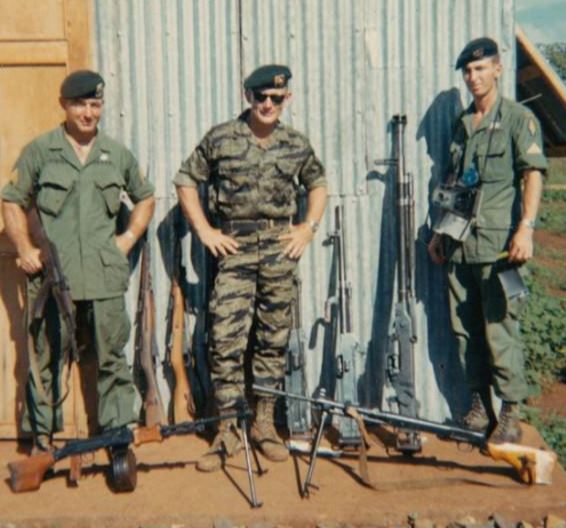SSG Fisher, Me and SSG Carle. With a small selection of the many hundreds of weapons we destroyed. They
included SKS small arms rifles, AK-47s, RPGs, PKM and RPDs and HMG .51 caliber small and large crew
served machine guns.
By Peter Lloyd
PAL: Jim, in your book No Guts, No Glory., you talk about a mission you went on inside Cambodia when you
discovered a huge weapons cache. Can you describe that mission?
JB: If you remember a statement I made in the beginning of my last interview, “The Wire Tap” I mentioned my two most successful missions. One was the wire tap mission and the other was destroying the huge enemy weapons cache in Cambodia. Again these two missions did more to hurt the enemy than all the NVAs my team and I killed and wounded during our nearly 50 operations. During these two operations there was not a shot fired by either us or the enemy. A photograph of similar Cambodian jungle canopy, beneath which this mission took place.
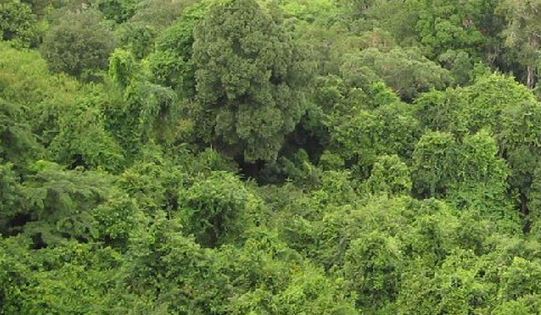
A photograph of similar Cambodian jungle canopy, beneath which this mission took place.
PAL: When did you go on the ‘weapons cache’ mission?\
JB: On June 28, 1968, my team, with Sgt. Knowles my radio man, and four Montagnards, was inserted into
Cambodia for a recon mission deep behind enemy lines. We were told that intelligence believed there was a possible build-up of NVA is this area. The LZ that I picked out a few weeks before was larger than I liked. Normally I like a small LZ that does not give the enemy a long field of sight. This LZ was about the size of two football fields, I prefer one the size of a basketball court. The pilot put us down as close as possible, for our direction of movement, on the edge of the LZ. Another thing I did not realize, but I should have, with our direction of movement into the jungle once we left the chopper, we had to go down a pretty steep decline, which was about forty yards. Once at the bottom, we waited to make sure we hadn’t been spotted, and after that, we moved towards our assigned target.
When moving through the jungle you keep your head on a swivel trying not to miss anything. In a very short time I noticed that every third or fourth tree had been cut off flush with the ground. The NVA did this so as to not disturb the overhead canopy cover. Otherwise it would have alerted our planes to the fact that the enemy was doing some kind of build up in this area.
PAL: Why had the trees been cut?
JB: The trees that were cut were about 6 inches in diameter. That was the first time I’d seen anything like it. Even my point man, Mang Koah, hadn’t noticed or seen this before. This told me that the enemy was using the lumber to build something and it was probably big. This really put us on high alert and we started moving more slowly, expecting to come across an enemy compound. Within an hour we’d spotted two large buildings under the canopy. They’d been built using the cut-down trees, and were located on a high-speed trail
Identical Cambodian jungle
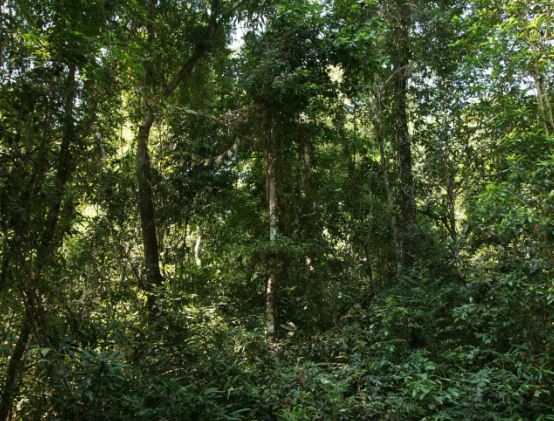
PAL: How had the buildings been constructed?
JB: Both buildings had thatched roofs, the sides were open on one building and partially enclosed on the other. I can still see those building like it was yesterday; they were twenty feet apart and each was 40 feet wide and 60 feet long. The NVA were very ingenious; these two building were surrounded by a nice, cleared open area and were sitting on a high speed trail, all covered by jungle canopy, but you would never know they were there if you were flying overhead.
PAL: How had they camouflaged them from the air?
JB: The NVA would pull the tops of the jungle trees together with rope to disguise the fact that there was something underneath. This was common practice and I had seen it a lot. There were times that, while flying over an area to pick out an LZ, I would see a small trail, two feet wide, in a clearing going into the jungle. Once in the jungle, on the mission, and at that same trail, it would turn into a truck road ten feet wide right under the canopy. The NVA were very ingenious in the way they used the jungle to hide what they were really doing.
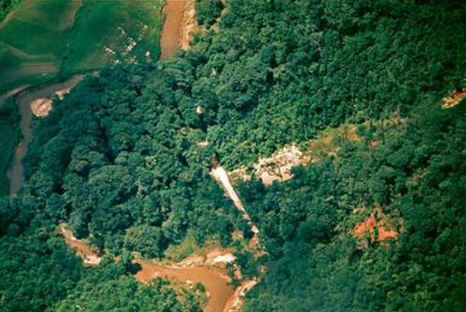
An example of North Vietnamese ingenuity – using the canopy to make the white track disappear under the
jungle
PAL: What did you then do when you discovered the compound?
JB: We sat there just at the edge of the open area, still in the cover of the heavy jungle and watched the compound for an hour to make sure there wasn’t any enemy troop movement, then we moved into the compound and found that one of the buildings, the one with the open sides, housed a huge cache of enemy weapons, the largest found at that time in classified enemy-held territory. The other building was used, we guess, for housing troops to guard the weapons and it was empty. I could not believe that these weapons were just sitting in the middle of the jungle without someone guarding them, although I found out in a couple of days that there was a unit to guard them.
PAL: What kinds of weapons were stored there?
JB: The weapons were laid out on two levels of flooring. It was really unbelievable, there were Chi COM type TT33 7.62mm caliber type 54 semi-automatic pistols, SKS semi-automatic small arms rifles 7.62mm caliber, AK-47 full automatic 7.62mm caliber, RPG7 hand held rocket launchers, PKM general purpose fully automatic machine guns 7.62mm caliber belt fed, RPD light fully automatic machine guns 7.62mm caliber, and HMG .51 caliber heavy crew- served fully automatic machine guns. We also saw 122MM rocket launchers with a range up to 11 kilometers and a lethal burst area of 163 square meters. These were highly prized weapons.
There were hundreds of weapons. I will tell you a funny story about the pistols at the end. The picture below also shows some of the weapons we brought back.
Jim Bolen with some of the weapons haul
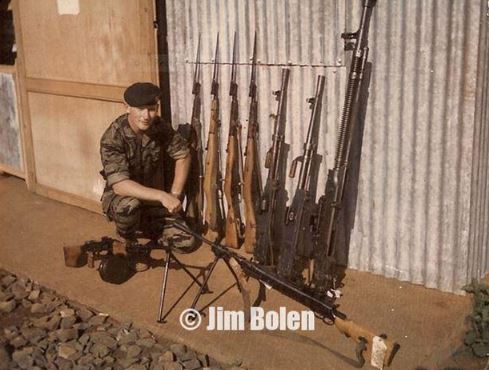
PAL: What did you do then?
JB: We took pictures (I would love to have those pictures now) and moved out of the compound away from our original LZ. Right before we moved out, I felt I had to do something to mess with the enemy. There was a wooden box about 2 feet by 3 feet sitting on the ground right outside the weapons building. It was pretty heavy, I dug a small hole next to the box; I put a hand grenade in the hole. Next I pulled the pin on the grenade and held the handle down. I pulled the box over the hole and the grenade handle. Once the box was moved the grenade would explode and kill whoever was there. I will tell you a story about the box at the end of this interview. I just did not want these weapons to sit there without someone getting killed. I did not know what the people at our base camp were going to let me do about these weapons right then. During our next scheduled radio check (we only had scheduled radio checks three times a day), I reported to the FAC what we had found, and I requested demolition to destroy the weapons. We then moved out of the area for a day in order to stay as far away from the enemy compound as possible and I found a safe LZ for the arrival of the
demolitions team. The next morning I was informed that recon team “MITER” would be bringing in our demolitions and other needed supplies to carry out the mission. I gave the FAC our position and told him we were close to a safe LZ. When the team was close I told the FAC that I was using my mirror to identify our LZ. FAC’s flying high above the area can spot a mirror flash very easily. He spotted my mirror and guided the chopper with the team in, and once the support team was on the ground we moved to find a reasonably safe area to go over our plans.
PAL: What kind of equipment did the demolition team bring with them?
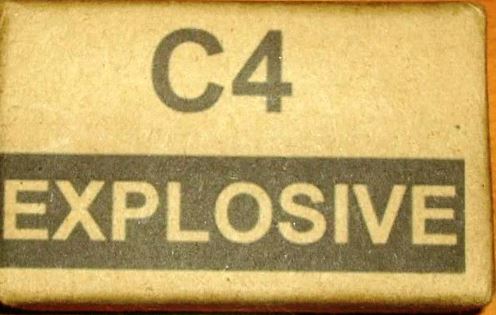
C-4 Explosive
JB: Sgt. Rick Fisher and Sgt. Cecil Carle were the Americans on the team with 4 Montagnards. Each “Yard” was carrying 40 pounds of C-4 for a total of 160 pounds. Sgt. Fisher was carrying explosive caps, detonation cord, time fuses, igniters and 2 hand-held 10 cap twist detonators. All Special Forces personnel were cross trained with explosives so once we found what we thought was a safe area we started to pre-wire the C-4. We spent a lot of time going over how we were going to set the explosives. Every American had their job to do.
I drew on the ground the layout of the building and how we would enter the weapons cache. A lot of time was spent pre-fabing, cutting the wires and detonation cord to the proper length. We pre-bored the C-4 to accept the blasting caps. We could not completely pre-wire everything as it would be way too dangerous traveling through the jungle with pre-wired 160 pounds of C-4 with blasting caps, if it went off it would wipe us and part of the jungle out.
Because the support team had to carry the extra equipment plus their own food and water they did not bring any comfort items with them, such as ponchos. Of course it was cold and it rained all night. Sgt. Fisher and I talked recently about this mission. He said it was his longest and coldest nights of the war. Anything we had to protect us from the rain had to be used on the explosives. On 30 June, that morning, we headed back through the jungle to the enemy compound.
PAL: How did you find your way back?
JB: Everyone, including our base camp commander, was worried I wouldn’t be able to find our way, but I have always had a good sense of direction and was pretty good at reading the old French maps. The maps only showed contour lines, no roads or trails, although some streams were shown, if they could be seen from the air.
One of Jim’s team members,”SSG Carle”, moving though the Cambodian jungle on a mission
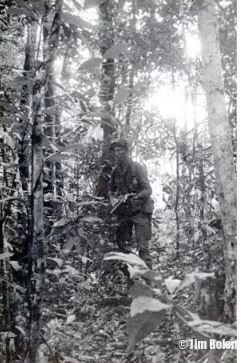
I felt confident that I could find the weapons cache again, but I was concerned about being compromised, especially with twice as many men moving through the jungle. We had to cross some small trails with enemy activity. I kept thinking it would be a shame to be this close and get compromised and not being able to complete this mission. I did not know it at the time but our Company Commander was flying overhead with the FAC. He wanted to be there to help in any way. I knew we were getting close because I started recognizing the surrounding terrain. I spotted the clearing with the buildings under the canopy and moved to the edge to see if it was safe to bring the team up.
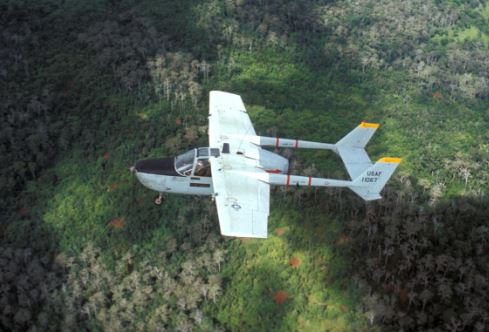
FAC flying over the jungle
PAL: Was it still safe?
JB: No. To my dismay, when I got there, there was a small enemy unit cleaning the weapons and taking an inventory of them. I got on the radio and reported our predicament. Our commander in the FAC above said it was too dangerous and that we should abort the mission. I declined and said we were going to try and wait the enemy out. We had all taken too much of a gamble already, and I did not want to see these weapons cross over into Vietnam. Again, later, I was told to abort and again I said no. We were maybe 30 to 40 feet away from the soldiers working on the weapons. We could easily hear and see them talking and laughing.
I told the FAC that no matter what happened we were going to try and get to the LZ we came in on. All the pilots knew where it was and it would make for a quick extraction.
North Vietnamese soldiers
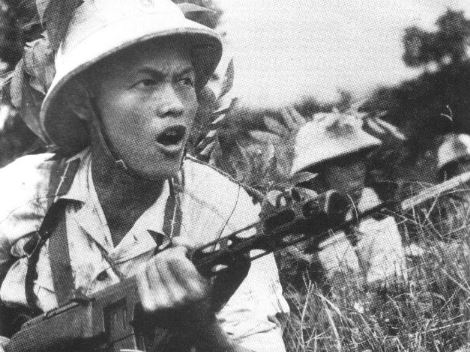
PAL: Then what happened?
JB: We lay outside the compound for a few hours, and, sure enough, the enemy moved to the next building for lunch and down-time. We waited till they got quiet, went into the rear of the compound building with the weapons furthest from where the enemy were taking their break. The “Yards” watched for security while we (the Americans) placed and connected the charges. I cannot believe how smoothly everything went at that point. We had to move up and down both sides of the building placing the demolitions then inserting the blasting caps and detonation cord. We then, very quietly, selected specific weapons to take back with us for intelligence purposes. In the final picture you can see the weapons we brought back. When going out the rear of the building I pulled the wire, which was on a spool, connected to the explosives, along with me as we moved away and back towards our insertion LZ into the jungle. I was looking for a place for cover from
the explosion. There was a huge bolder we’d passed a few days ago, it was at least five feet tall and ten feet around, just sitting in the middle of the jungle. The electric blasting wire was 100 feet long, just enough to get me behind that bolder.
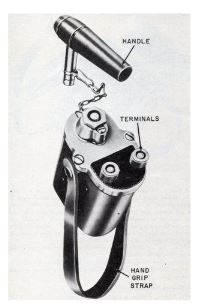
Ten cap blasting detonator
Nay Bunn stayed back with me for protective cover if needed. He was always watching my back. Sgt. Knowles knew the way back to our original LZ, and once my team was out of sight and at a safe distance, carrying the weapons we’d picked out, I primed the detonating device by putting the handle on and twisting it a few times to get it ready. Then I hooked up to the electric blasting cap wire to the detonating device, a ten cap hand twist detonator. I had my fingers crossed and held my breath hoping everything was hooked up right, especially under the circumstances. We got behind the large rock and detonated the explosives; there was a tremendous boom and concussion destroying the building and hopefully most of the weapons. I could hear the weapons raining down through the jungle all around me, and we could hear the NVA in the other building, yelling from fear and confusion. Right after the initial explosion I heard a secondary smaller explosion. I realized that was my hand grenade that I had put under the wooden box. The box must have been dislodged with the initial explosion. Our CO and FAC pilot said later after we got back to Ban Me Thuot the whole top of the jungle exploded. I wish I could have seen it from that angle. Now we had to get out of this Hornets nest; we had no idea how many NVA were in the area, but the confusion helped and gave us some time.
The 20th S.O.S Squadron (Real Heroes) – Green Hornets – arriving over the Cambodian jungle
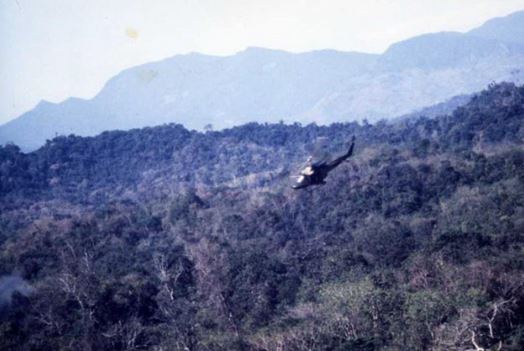
PAL: Can you recall what happened next?
JB: I remember running as fast as I could, following Nay Bunn through the jungle. By the time we got to the incline we originally came down when we arrived, I knew we were close to the LZ, although it seemed the incline was a hell of a lot longer going up than it was coming down. Once I got on the LZ I saw the first chopper loading some of the other team members. Normally only one chopper is used to extract a team but we had two teams plus the captured weapons. The second chopper came in for the rest of us. I was informed by the pilot that, because of the weight of the captured weapons and room available, they didn’t think we could get everyone in the second team extracted with the chopper. They could not fully prepare for the extra weight because they did not know how many weapons we were going to bring out, if any. I told the pilot that I would stay behind and to have a gunship come in and get me.
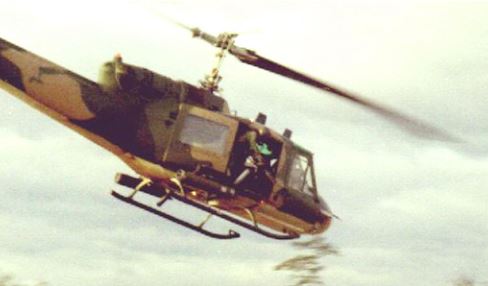
Green Hornet “Gun Ship” swoops
JB: I felt pretty good, but lonely, standing on the clearing on my own, because I still did not see any enemy. I hadcomplete faith in The Green Hornet Squadron – they were the best and never let any of our teams down; before I knew it there was a gunship right on top of me coming down. I jumped on the chopper and just then
the FAC told the pilot of my chopper that he could see enemy coming out of the jungle onto the LZ. We were barely clearing the trees when I could see the enemy coming onto the LZ. I don’t know why but they did not fire a shot at us. We were about 100 meters and moving away fast from them by that time, plus maybe because of the gunships with rockets and mini guns circling right overhead. The fire power the gunships could put down with the mini guns was devastating.
PAL: What happened when you got back to base with the weapons?
JB: This operation was extremely successful and so important that they sent a private plane to fly me, SGT. Knowles, SSG. Fisher and SSG. Carle to Saigon to meet and brief Commanding General Abrams.
Top Secret Memo of congratulations from General Abrams.
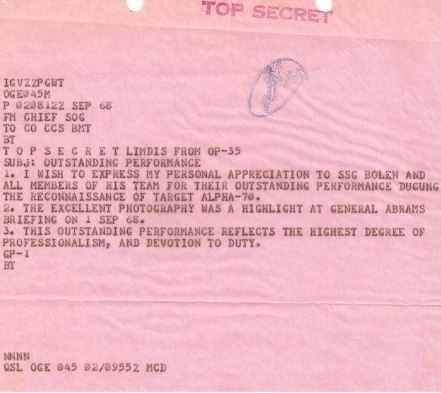
PAL: What happened in Saigon?
JB:
I was supposed to give the briefing to General Abrams at Operation 35. While I was preparing for the briefing I was told that General Abrams was running short on time and my part of the briefing was cancelled. We spent a night or two on the town to unwind. We at least got a private plane to fly us down and back to Saigon.
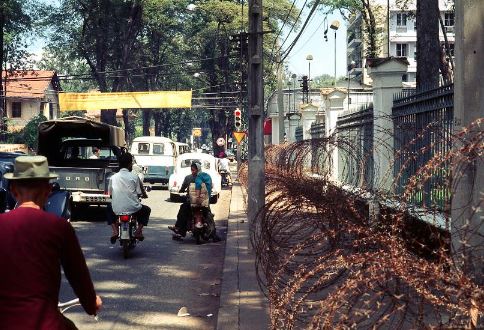
Downtown Saigon in 1968
We were really praised for the operation and we were told that the Commanding Officer of the Special Forces Group was going to fly in from Nha Trang to personally present us with our awards. We found out before the ceremony we were to be awarded the Bronze Star for Achievement, not Valor, but for Achievement.
This is a picture of the awards ceremony –Jim Bolen, Sgt Knowles, SSG Fisher and SSG Carle
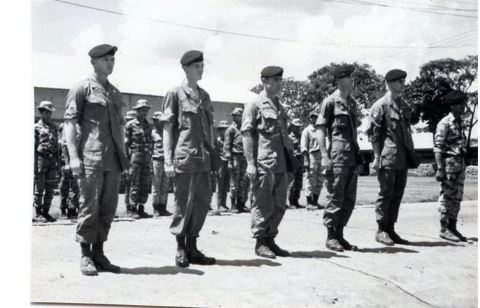
PAL: Why was that?
JB: The Commander of the Special Forces Group said he could not give us a Valor Award because there were no shots fired by either side. In other words if you are dropped in behind the enemy lines, find a large weapons cache, get supported by another team, sneak in with the enemy right there, use 160 pounds of C-4 and destroy the enemy weapons right under their enemy’s nose, get out safely, and do all this behind the enemy lines in heavily-held enemy territory, he did not believe this would be considered a Valorous action. As you can tell, I am still pissed to this day. We all actually discussed refusing the award but we thought that would be in bad taste and reflect poorly on our unit. At least I have the satisfaction that the “wire tap” and “weapons cache” missions hopefully saved a lot of American lives. I said that I would make a remark at the end of the interview about the box of pistols, well here it is. When we finally got back to our FOB in Ban Me Thuot, one of my indigenous personnel asked me why I did not bring back the box of pistols. I said what pistols? He told me the wooden box that I put the hand grenade under was a box of new TT33 semi automatic pistols. These pistols were worth a great deal of money and in high demand. I was really mad and said why didn’t tell me, I can’t read Chinese. I was razed a while for this.


